With the successful launch of the JWST, the focus turns to the complicated process of unfurling the sunshield and unfolding the mirror. We’ll look at just where NASA is in the process and how much farther we have to go before first light. Plus, Earth and supernovae, and in this week’s What’s Up, we look forward to 2022’s astronomy events.
Podcast
Show Notes
Enceladus: geysers from slush pockets(?)
- Enceladus’ plumes might not come from an underground ocean (Science News)
Relic star system streaming thru Milky Way
- CNRS press release
- “A stellar stream remnant of a globular cluster below the metallicity floor,” Nicolas F. Martin et al., 2022 January 5, Nature
Matter and antimatter respond the same to gravity
- CERN press release
- “A 16-parts-per-trillion measurement of the antiproton-to-proton charge–mass ratio,” M. J. Borchert et al., 2022 January 5, Nature
Sun’s early rings limited Earth’s growth
- Rice University press release
- “Planetesimal rings as the cause of the Solar System’s planetary architecture,” Andre Izidoro et al., 2021 December 30, Nature Astronomy
Supernovae connected to appearance of life
- Supernovae and life on Earth appears closely connected (EurekAlert)
- “Supernova Rates and Burial of Organic Matter,” Henrik Svensmark, 2022 January 5, Geophysical Research Letters
JWST is almost a telescope
What’s Up: Moon and Jupiter kick-off 2022
- Astronomy Calendar — Upcoming Events (timeanddate)
- Mercury: The Iron Planet (timeanddate)
- Lunar occultation of Uranus (In-The-Sky.org)
Transcript
Hello and welcome to the Daily Space. I am your host Dr. Pamela Gay, and we are here to put science in your brain.

There is no clever way to introduce our first story, so I’m just going to lay the facts out there: Saturn’s moon Enceladus has geysers and a liquid ocean, and new simulations show that the liquid in the geysers may not come from that ocean. And that annoying reality means looking for life is harder than we thought.
Backing up. In 2005, the Cassini space probe was able to both image and measure geysers of ice coming from the surface of Enceladus. Early explanations leaned toward the geysers being triggered by quakes in the ice that released water from pockets between the surface and the sea. Later measurements, however, found they are salty water, and early modelers thought any salts from near-surface pockets should just leave the salt on Enceladus’s surface. That led to a new thought that the geysers could be expelling liquid all the way from a deep-down sea — a sea with possible life that could be easily sampled.
But physicist Colin Meyer looked to our own oceans for inspiration and realized that meltwater pockets could concentrate salts, creating a mix that could send salt to altitudes seen in Cassini’s measurements. Computer simulations proved this out and crushed a lot of hopes. Instead of Enceladus spewing water that may have circulated with deep-sea life, it is just tossing out fluid trapped in its icy skin.
Basically, Enceladus may still have subsurface seas, those seas may have life, and all of that may be out of our easy reach. Or — and this is now a less likely looking or — Enceladus may have geysers expelling liquid from that subsurface sea allowing us to sample any potential life. And not knowing which is the case, makes planning to go checking for life less straightforward than one might wish.
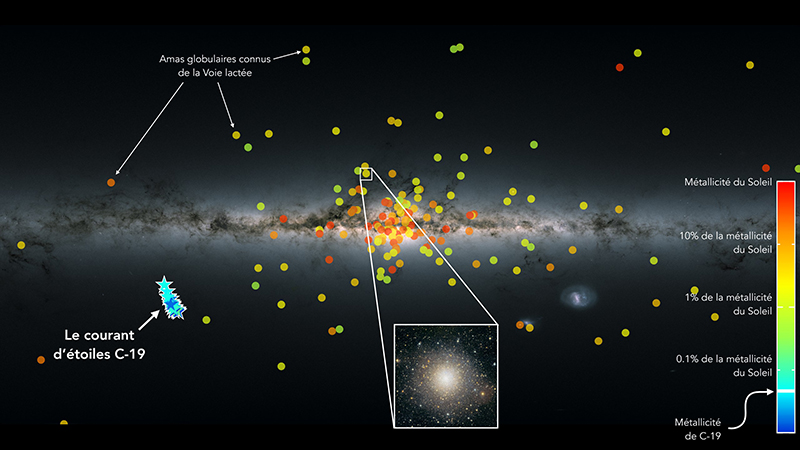
We are able to advance astronomy as we acquire more data, evolve the technology used to model that data, and realize what previously omitted physics really needs to be added into our estimations.
One of the more amusing results of every advancement is the discovery of new streams of stars. For over a decade, a mainstay of the American Astronomical Society (AAS) meeting each January has been the announcement of newly discovered streams of stars that are formed from the remains of dwarf galaxies and other clusters of stars that our galaxy is consuming. While there is no AAS meeting this year thanks to COVID, there is still a stellar stream being announced thanks to the work of a team led by Nicolas Martin and published in Nature.
Made of the closest to pure hydrogen and helium of any known cluster of stars, this remnant appears to be leftover from the early days of stellar evolution. The smallest stars can essentially live forever, and astronomers have been confused for decades that we see no very metal-poor small stars. Largely, we just assume, only large stars initially formed, and their supernovae enriched the material subsequent generations were built from. It is a nice story that can explain what is seen, except for this system.
Adding more complexity, this group of stars is still close together and hasn’t been stretched into an unrelated group as it orbits. Exactly how that happened, we also don’t know. All we know is the stars exist, we found them, and they currently are close together. Everything else? We leave that to the computer models. Knowing a thing is there is step one, and for today, that is enough.
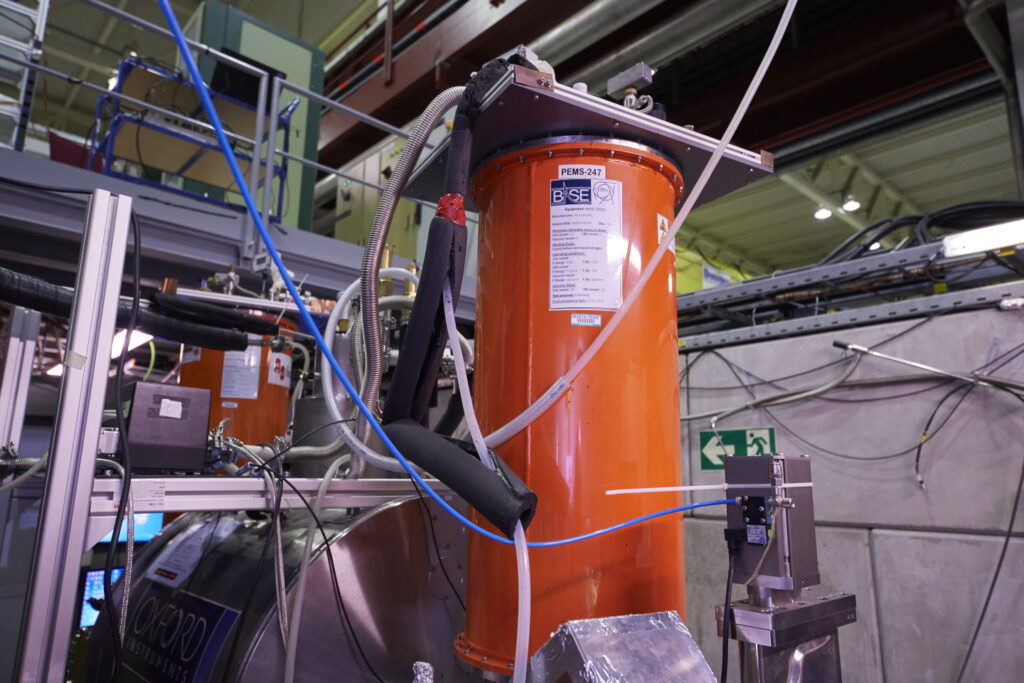
As a final note in this segment, we’d like to let you know that in new experiments at CERN, researchers led by M.J. Norchert find that gravity affects protons and anti-protons the same way. Researchers accelerated the two particles the same way in CERN and studied the period of the system. This period of motion is based on the charge and mass of the particles and will only match if gravity affects them the same way.
And it did, to an accuracy of three parts in one hundred. This doesn’t prove they are absolutely identical, but within the error of the experiment, this appears to be the case, and that means physics works just as we keep saying it works. That is one small thing to take comfort in.
Today’s science news is kind of all over the place, from Enceladus to stars, to the fundamental physics of the universe. Let’s now bring things back to Earth.
For the past many years, I’ve found myself repeating over and over, “If anyone tells you they know how the solar system formed, they are lying.” As of the time of this recording, January 6, 2022, I’m willing to say that at least one team may actually have started to unlock this issue.
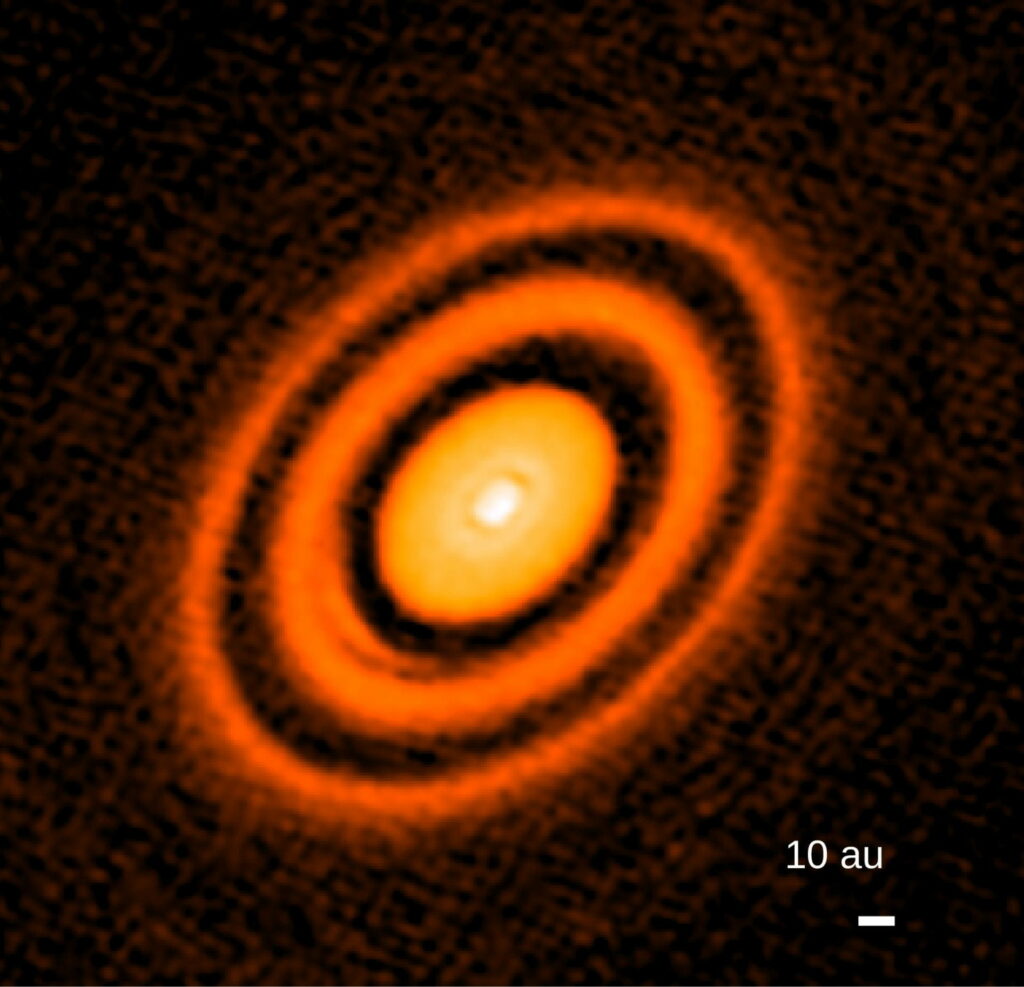
In new models published in Nature, a team led by Andre Izidoro was able to evolve a disk of material around a young star into the solar system we see today, complete with, and here I quote from the press release:
- “An asteroid belt between Mars and Jupiter containing objects from both the inner and outer solar system.
- The locations and stable, almost circular orbits of Earth, Mars, Venus, and Mercury.
- The masses of the inner planets, including Mars, which many solar system models overestimate.
- The dichotomy between the chemical makeup of objects in the inner and outer solar system.
- A Kuiper belt region of comets, asteroids, and small bodies beyond the orbit of Neptune.”
These features have not been previously reproduced in all their reality.
To get to this solar system in a box, the team simulated a system like our solar system forming hundreds of times. They started with a gas disk around a young star and assumed bumps in the system’s pressure at specific places that were driven by chemistry: they put pressure bumps at the silicate sublimation line, the water snowline, and the CO snowline. This initial distribution of matter and pressure led to the formation of a ringed system like those we see in Atacama Large Millimeter/submillimeter Array (ALMA) data, and that disk evolved into what we see in our solar system.
More research will be needed to see if this system holds up for other kinds of star systems, but it is a major step forward to be able to get things as simple as “Why isn’t the Earth bigger?” and “Why is the asteroid belt where it is?” to come out of the physics instead of just being the truth about our solar system that lacks cause.
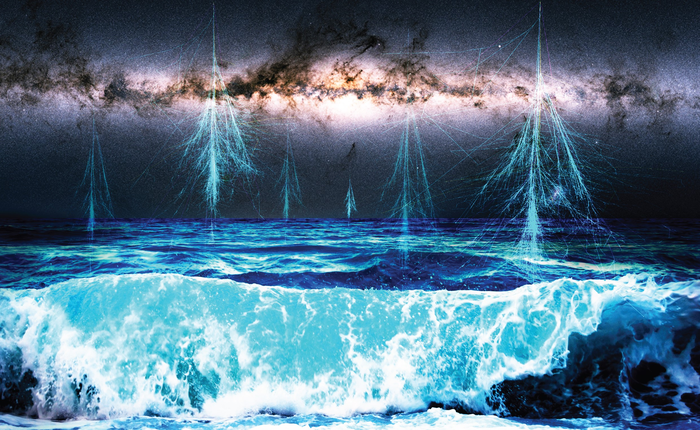
Being able to understand how the solar system formed, however, is not enough. We also need to understand how it evolved to this system we have today that is capable of hosting so much beauty, desolation, and even life.
This is where the work of Henrik Svensmark comes in. Published in Geophysical Research Letters, he points out that the history of nearby supernovae lines up with the evolution of organic materials on the Earth. Ions from supernovae can drive cloud formation and cool the world globally while setting up greater extremes in climate between the poles and equatorial regions. Subsequent high winds and ocean mixing drive nutrients to the seafloor where they have been fossilized for modern-day detection.
According to Svensmark: A fascinating consequence is that moving organic matter to sediments is indirectly the source of oxygen. Photosynthesis produces oxygen and sugar from light, water, and CO2. However, if organic material is not moved into sediments, oxygen and organic matter become CO2 and water. The burial of organic material prevents this reverse reaction. Therefore, supernovae indirectly control oxygen production, and oxygen is the foundation of all complex life.
This is your reminder that everything is connected, and the universe can never really be simulated except by creating a twin of the universe. Instead, folks like me choose to look out at the universe and see what reality has to offer, and the things we have the ability to see maybe about to get a whole lot more interesting.
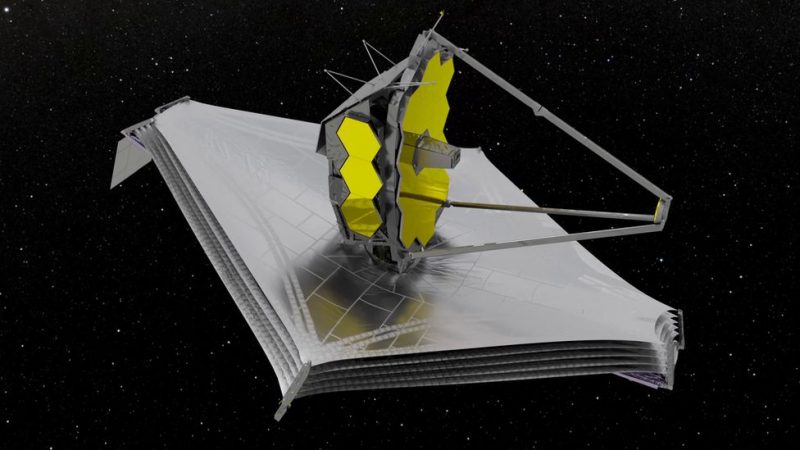
Okay, so if you’ve been watching this show, you know I’m not big on trusting technology to work, and when that technology is part of the JWST, seeing is believing, and until I see something functions, it is dead to me.
But with even NPR including JWST in more news segments than not, it’s time for an update on JWST.
This decade-delayed and billions over budget spacecraft finally took off on Christmas day and 0-dark-20 in the morning for those of us here in the Americas. For the East coast, that was 7:20 am, with the mission reaching a safe trajectory before anyone in my house was even awake.
In the subsequent hours and days, things have gone along pretty much as well as could be expected. The timeline has slipped a bit here and there, but that was actually built into the final schedule and has been due to known gaps in knowledge. Specifically, the JWST is a really really big spacecraft, and there isn’t a vacuum chamber large enough for the full spacecraft to be tested under a vacuum. This resulted in unknowns regarding how long it would take various systems to reach desired temperatures and to fully outgas. Beyond dealing with these unknowns, which were all easily handled, in one case just by changing how the Sun hit the spacecraft, everything has so far been managed.
At this point, the majority of the more than 300 single points of failure have been moved past. The multi-layer sunshield has been extended and put under tension so that the layers sit nice and parallel to each other; the secondary mirror has been extended so light captured by the telescope can be sent back to instruments. Major remaining milestones include unfolding the rest of the multi-segmented mirror.
In theory, NASA could catch some photons with the mission in its current configuration, and various folks are out there voicing their hopes at some early images being released. That is not actually in the plan, but NASA, for many very good and valid reasons, is eager to show that astronomy’s newest observatory will live up to the dreams we have for it and will be worth the fight so many fought to get it completed and launched.
According to a timeline put together by Jonathan McDowell from various NASA documents, the next major actions will be the deployment of the port and then starboard mirror segments, with each action being allocated an entire day of effort. The mirrors should lock into position about the same time that JWST starts to use its altitude control system, and a few days later, the mirror actuators will be deployed. This, honestly, is the system that scares me the most because I’ve used telescopes where actuators didn’t do the needed job. Without these actuators, the telescope won’t be able to properly focus the mirror and maintain that focus.
Hopefully, two weeks from now, we’ll know if they check out and if the mirror successfully deploys. This is a slow process, but we will bring you updates as milestones are crossed. We have 170 days to go before science begins. Buckle up. This is going to be a long and stressful ride.
And if you have a big enough telescope, which I do not, you might even be able to see JWST, but if you can’t there is some pretty awesome other stuff to look at.
What’s Up

This week in What’s Up is the close approach of the Moon and Jupiter and astronomical events that you can look forward to in 2022.
The planets are heading below the horizon soon, to return this summer. This means you only have a short window of time to see them before they’re gone for months. The planets aren’t terribly high, so the atmosphere will make getting a clear view challenging.
Something to look for this week is a close approach of the Moon and Jupiter. They are still pretty far apart, nowhere near the closeness of the Great Conjunction back in 2020, where you could see Jupiter and Saturn at the same time in the eyepiece. The close approach technically happened yesterday (the fifth), but the two bodies are still fairly close together.
The Moon is three days into its cycle, so only a small slice of it is illuminated. Over the next few days, it will get brighter and brighter. The first quarter phase is this weekend, specifically this Sunday [January 9]. The first quarter is the best time to view the Moon, as we’ve mentioned before. This is because the Sun’s light is almost parallel to the Moon, making for lots of contrasting shadows.
In the few hours immediately around the quarter moon, you can see formations called the Lunar X, Lunar Y, and Lunar V. These aren’t actual shapes on the Moon but are formed by shadows from groups of craters on the Moon that form the apparent shapes of those letters. However, there isn’t much time to see these shapes, as the Sun fully illuminates the craters, and the shadow goes away.
The Lunar X, Y, and V happen every month, but there are other events in 2022 which happen only a few times or only once.
There isn’t anything terribly interesting for the first few months of 2022, but March 20 is Venus’ greatest western elongation. This is the point where it’s the furthest from the Sun and easiest to view. At western elongation, it is visible as the “morning star”, just before sunrise. Viewed in a telescope, you can see the phase of Venus at this point in time.
In April, there is a partial solar eclipse. Solar eclipses of all kinds are amazing sights, but partial solar eclipses are much less exciting than total solar eclipses. This particular partial eclipse is even less exciting; the greatest eclipse will only be visible in the southernmost part of Chile and in the Southern Ocean off the coast of Antarctica at 20:41 UTC on April 30. Some amount of eclipse will be visible most of the way up into Chile and Argentina.
In May is a total lunar eclipse which will be visible mostly in the eastern U.S., most of Central America, and all of South America.
In June is Mercury’s greatest western elongation. Mercury is hard to see because it’s so close to the Sun; the only time to really see it is within a week of elongation. During western elongation, it is visible in the morning sky.
By late summer and heading into early fall, the gas giants are finally back to play. August 14 is Saturn’s opposition, where Earth is directly in between Saturn and the Sun. This is the best time to see the planet, though it is almost as good for a few weeks on either side of the event. My rule of thumb is that the atmosphere is much less of an issue if an object is at least 30 degrees above the horizon. This is easier if you live closer to the equator unlike me. Jupiter will follow, having its opposition on September 26. Like Saturn, this is the best time to see the planet.

Early October brings a rather special event – the Moon will pass in front of the planet Uranus for people in the western U.S. and Canada. Uranus will be in the constellation of Aries at a relatively bright magnitude of +5.7. Uranus will disappear behind the illuminated side and reappear a bit less than an hour later from the non-illuminated side.
Then, in late October and early November, another pair of partial solar/total lunar eclipses occur. The partial solar eclipse will be visible in Europe, Western Asia, and parts of Northern Africa on October 25. This partial eclipse comes closer to totality than the one in May but is still not total. The total lunar eclipse component will happen later, on November 7. This total lunar eclipse will favor the western half of the U.S. and Canada and East Asia.
To wrap up the year are two interesting events one can see in a telescope.
First, the occultation of Mars by the Moon will be visible from North America. It will happen on December 7, 2022, in the evening. The Moon will pass directly in front of Mars, which could make for some very interesting astrophotographs. After about an hour, Mars will become visible again. One day later on December 8 is the opposition of Mars. I’ve already talked about what opposition is several times during this show.
Remember, go outside and look up.
This has been the Daily Space.
You can find more information on all our stories, including images, at DailySpace.org. As always, we’re here thanks to the donations of people like you. If you like our content, please consider joining our Patreon at Patreon.com/CosmoQuestX.
Credits
Written by Pamela Gay and Erik Madaus
Hosted by Pamela Gay
Audio and Video Editing by Ally Pelphrey
Content Editing by Beth Johnson
Intro and Outro music by Kevin MacLeod, https://incompetech.com/music/


 We record most shows live, on Twitch. Follow us today to get alerts when we go live.
We record most shows live, on Twitch. Follow us today to get alerts when we go live.